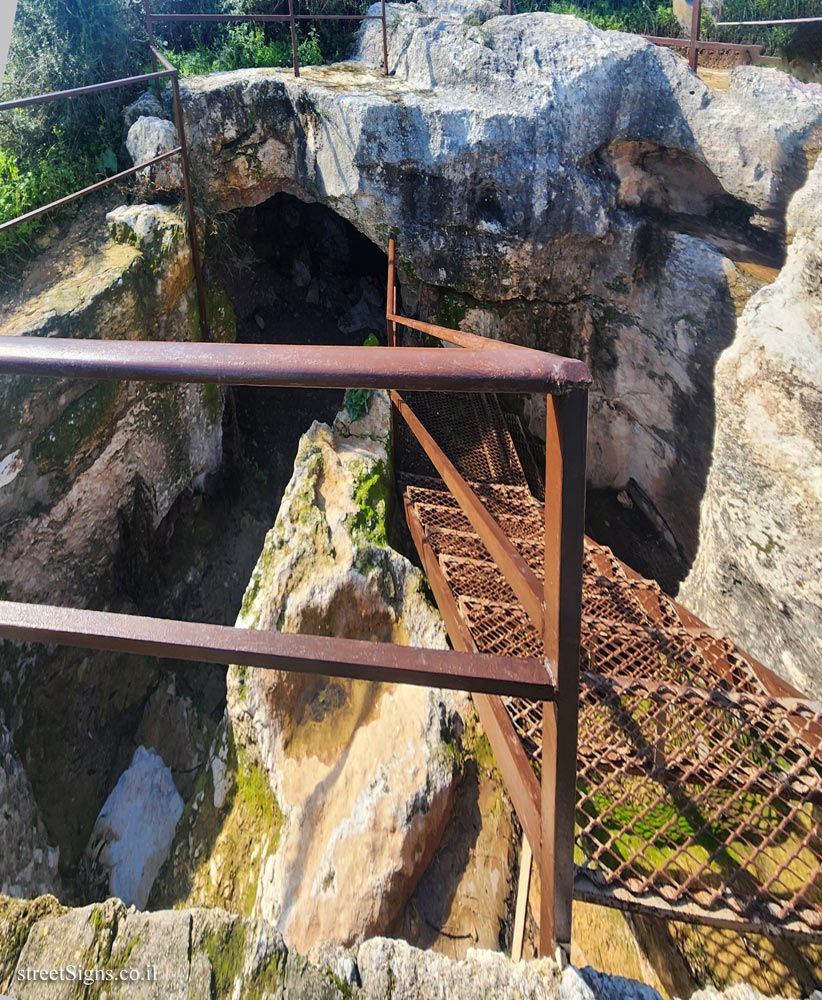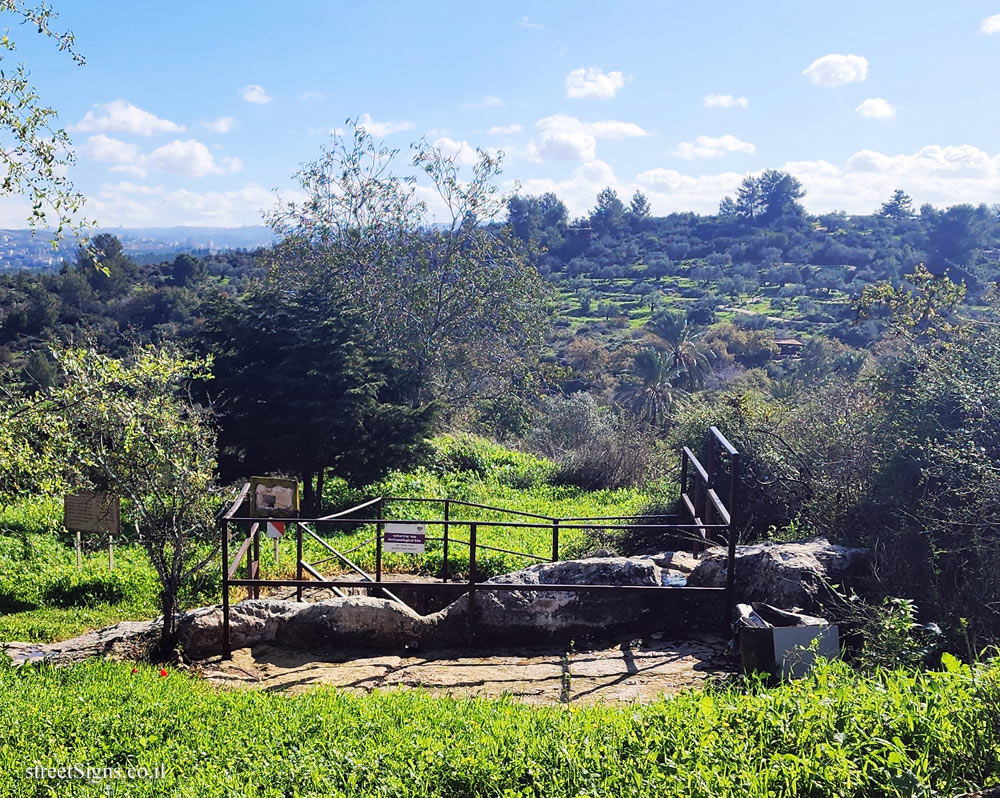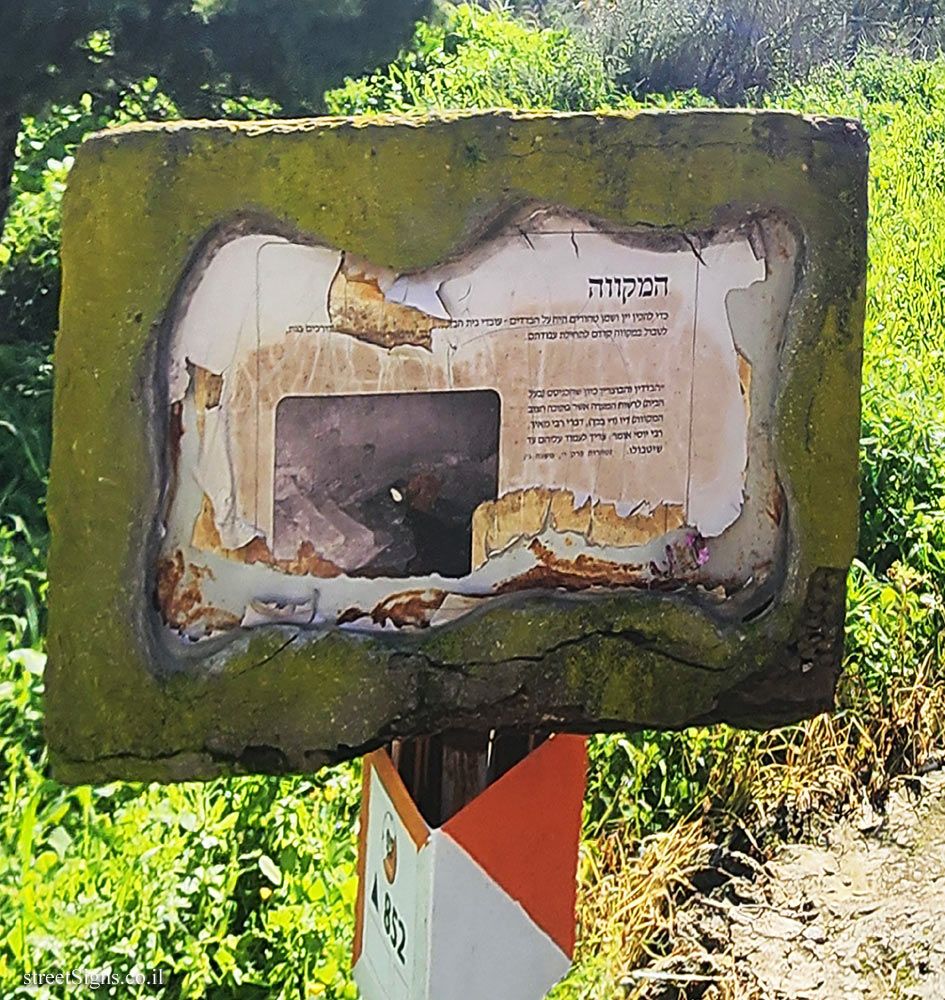The mikvah was photographed on the same day by the same photographer
 Click for a larger image
Click for a larger image  Click for a larger image
Click for a larger image Next to the mikvah is another sign that reads:
המקווה כדי להכין יין ושמן טהורים, היה על הבדדים - עובדי בית הבד, ... והדורכים בגת לטבול במקווה קודם לתחילת עבודתם.
בדדין והבוצרין, כיון שהכניסם (בעל הבית) לרשות המערה (אשר בתוכה חצוב המקווה) דיו (די בכך), דברי רבי מאיר. רבי יוסי אומר צריך לעמוד עליהם עד שיטבולו
טהרות פרק י’ משנה ג
[translation]
The Mikveh In order to prepare pure wine and oil, the workers of the Oil mill , ... and the Grape treading had to immerse themselves in the mikvah before starting their work.
The workers of the Oil mill the grape pickers, since he (the owner of the house) put them in the possession of the cave (in which the mikveh was carved) enough (that’s enough), the words of Rabbi Meir. Rabbi Yossi says that one should stand on them until they are baptized
Purification, chapter 10, section 3
The sign was photographed by the same photographer on the same day
 Click for a larger image
Click for a larger image Neot Kedumim Park is a park that tries to restore the vegetation that existed in the Bible period
Learn about:

 Click for a larger image
Click for a larger image  Click for a larger image
Click for a larger image  Click for a larger image
Click for a larger image